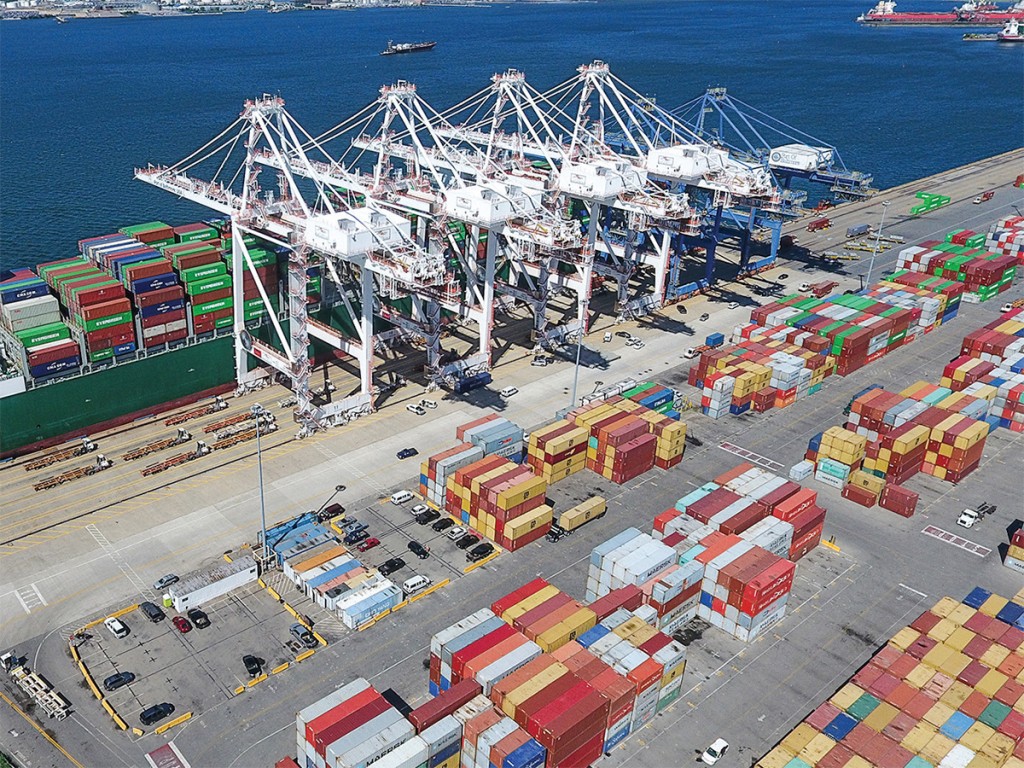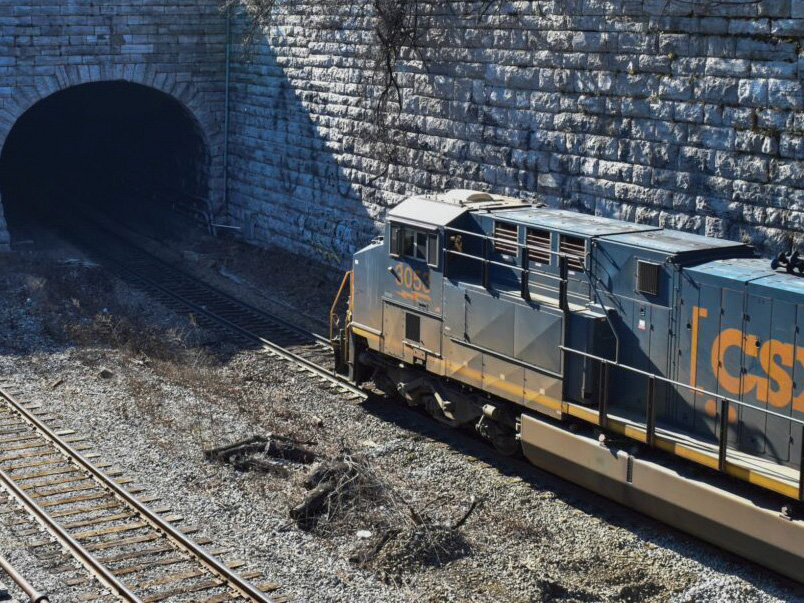The port is also piloting environmental initiatives with the help of government grants.

The Port of Baltimore had a strong 2022, when it handled a record $74.3 billion worth of cargo and established new records for import containers, imported paper, and general cargo tons at public terminals. Baltimore also handled the most cars and light trucks among all U.S. ports for the 12th consecutive year and ranked first in the nation for roll on/roll off heavy farm and construction machinery, imported sugar, and imported gypsum. The port is tenth among major U.S. ports for total cargo value and twelfth for cargo tonnage. It ranks ninth for total foreign cargo value and eleventh among major U.S. ports for foreign cargo handled.
Baltimore is also a prime gateway for goods heading to the e-commerce market and for cargo sent to the Midwest by rail, which explains the recent announcement by the Israel-based carrier ZIM that it was doubling the frequency of its Baltimore Express service to weekly and enhancing the size of the vessels dedicated to that service by 50%—from 6,000-TEU container vessels to 8,000-TEU ships.
Baltimore Express
“The increase from bi-weekly to weekly calls,” said Bayard Hogans, vice president of Ports America Chesapeake, “shows the strength of our e-commerce and mid-Atlantic market.”
“ZIM has excelled in utilizing our existing rail network to bring cargo into the Midwest,” added William Doyle, executive director of the Port of Baltimore, as well as the port’s “ultra-large, neo-panamax cranes and network of regional distribution, fulfillment, and sorting centers.”
ZIM’s upgraded Baltimore Express, an around-the-world service, uses the Panama and Suez canals, with a route that takes vessels from Jakarta, Indonesia; Laem Chabang, Thailand; Cai Mep, Vietnam; Yantian, China; Kaohsiung, Taiwan; the Panama Canal; and Kingston, Jamaica before coming to Baltimore. From Maryland, the line continues on to Norfolk, New York, Boston, the Suez Canal and Kaohsiung.

Howard Tunnel Expansion
The Port of Baltimore’s growing container business will be further strengthened by the expansion of the Howard Street Tunnel, owned by CSX Railway, which is underway and scheduled to be completed in 2025. The expanded tunnel will accommodate double-stacked container rail cars traveling to and from the Port of Baltimore, clearing a longtime hurdle and providing the East Coast with double-stack capacity from Maine to Florida, as well as the ability for double-stacked containers to transit by rail into the Ohio Valley and Chicago. The project involves clearance improvements in the 127-year-old tunnel and at 21 other locations between Baltimore and Philadelphia. The Howard Street Tunnel, which has received investments from the federal and state governments as well as CSX, is expected to increase the port’s business by 160,000 containers annually.
The port received another federal grant designed to increase its intermodal rail capacity. Last year, the port was awarded $15.6 million from the Federal Railroad Administration’s Consolidated Rail and Infrastructure Safety Improvements program to reconstruct the Seagirt Marine Terminal’s intermodal rail yard as part of the port’s Rail Capacity Modernization Project. The project will build four new rail tracks totaling 17,670 feet and two crane rail beams totaling 7,000 feet to support double-stack container trains. Ports America Chesapeake, the terminal operator, is matching the grant with $6.7 million.
“Improving intermodal rail operations is one of our top priorities,” said Doyle, “and the infrastructure improvements made possible through this grant will seamlessly complement our Howard Street Tunnel expansion project. Rail service from the Port of Baltimore to the Midwest is already increasing.”
EPA Grant for Handling Equipment
Another 2022 grant received by the Port of Baltimore came from the United States Environmental Protection Agency (EPA), which provided $1.8 million to replace cargo-handling equipment and dray trucks with cleaner and more efficient models. The EPA grant comes from the Diesel Emission Reduction Act (DERA), and will assist replacement of four yard trucks, six forklifts, one mobile welding unit, and three heavy duty dray trucks, with newer and more energy-efficient equipment. The new dray trucks will be the first electric powered dray trucks to provide service at Maryland’s Port of Baltimore.
The grant “will further the highly successful diesel and greenhouse gas emission reduction programs at the port,” said Doyle.
As part of that program, RoadOne Intermodal Logistics and IKEA continued a pilot to test electric trucks, the first activity of its kind at the port. The company completed a one-month pilot of the Nikola Tre BEV Class 8 truck last August, then added two electric drayage trucks to transport containers from the Port of Baltimore to IKEA’s distribution center in Perryville, Maryland, on a daily basis. The initiative is projected to remove 11,000 gallons of diesel fuel per truck and its emissions over a one-year period.
“We’re committed to offsetting the environmental impacts from port operations with green projects that meet our stewardship goals and provide community benefits,” said Doyle. “The introduction of electric trucks at the Port of Baltimore will reduce diesel emissions improving air quality for the port and adjacent communities.”
A contribution both to environmental stewardship and infrastructure enhancement came last year when the port put into service four additional ultra-large, neo-panamax cranes, each measuring 450 feet in height. The new cranes, which are fully electric and emission-free, are part of a $166 million investment at Seagirt by Ports America Chesapeake. Also included are 15 hybrid-electric rubber-tired gantry cranes, a new truck gate complex and software upgrades that improve efficiencies for truckers.
These infrastructure and technological improvements, said Doyle, “will greatly improve efficiencies for truckers accessing Seagirt, in addition to improving container-handling efficiencies for ships that call Seagirt, and help us bring new cargo opportunities to Maryland.” In March, Baltimore’s three original post-panamax container cranes, which have served the Seagirt Marine Terminal since it opened in 1990, were shipped out to the Ports America terminal at Port Tampa Bay.




